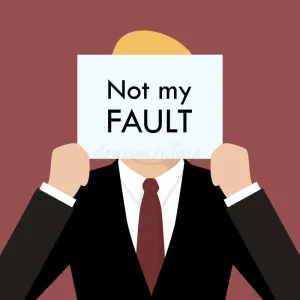Clarity is Power

Not my Fault
Have you ever encountered a situation where team members say, “I wasn’t aware that this was expected of me”?
In my experience, I joined a project in between, where I found it difficult to understand the reasons why despite having all talented team members, we are facing a lot more client criticism and escalations and even the team seems distant from each other. Gradually, after spending some time and understanding the reasons behind it, I was able to identify a root cause leading to the problem there which was mismanaged team engagement and the work expectations. Let’s try to understand, what made the situation like this and how it can be improved.
What causes this gap in understanding of the clear deliverables for a team?
Due to hardship and increased demands in this particular work setting, the management often risks omitting a clear setting of expectations for teamwork. In particular, it happens with a new project manager coming on board when the project is midway only to find members assuming that they have been already acclimatized to their Key Responsibility Areas (KRA) or when a new project is initiated and everybody must have a sense of direction, high-level understanding of the structure, roles, and responsibilities.
One of the reasons for the lack of clear KRAs is the absence of systematically defined accountabilities. Each project has different processes, roles, or even responsibilities that the team has to adapt to but which may be different from what the team has done in the past.
An area that has been changing consistently is the nature of roles and responsibilities which continue changing at a fast pace, thus very little time is left for properly addressing such attractions to the team.
How Unclear KRAs impact the individuals and the teams
It is clear that more than half the time the team goes through the delivery cycle while facing one pitfall or another and this results in internal confrontation, abandonment of the process of delivery, and shifting blame amidst unconstructive working conditions.
Some of these are the social problems that involve demarcation problems, and poor division of labor among the central and peripheral members of the team. Teams where the KRAs are not defined and communicated well face multiple challenges, as mentioned below:
- Few or no people take ownership and thus poor creativity

Fingers Pointing
There are cases when the team feels that they will in the end be the one being blamed and that is why no one comes forward to take responsibility. This reluctance springs from an inability to define what is expected of them and what is outside of their expectations.
- Tapering up of confidence level in teams

Lower Confidence Levels
With the continuation of these wars, team members gradually begin to lose their self-confidence and faith in their ability to make decisions. The inability to convey a clear vision tends to have a demoralizing effect on the people, resulting in low levels of engagement, and so a lack of the desire to lead. This leads to the overall performance of the entire team being lower than average and their output always being less than the expectation as one frustration builds upon another and nobody wants to do anything that requires teamwork.
- Hold more frustration and negative impacts on the mental status of the individuals

Frustrations
When employees experience ongoing frustration—whether due to unclear expectations, poor communication, or unmet goals—it triggers a constant state of stress. Over time, chronic stress can lead to burnout, anxiety, and even physical health issues like headaches or fatigue.
- Arguments in teams regarding unclear roles, leading to substandard work or delays

Team Conflicts
Inefficient communication and unfair work distribution ultimately lead to conflicts within the team, leading to unhealthy work environments. Teams find it difficult to work with each other.
- Misunderstanding of the hierarchy where goals are made and tasks performed affects results negatively.

Missed Deliveries
Ultimately, with all these conflicts going on, high-performing individuals also fail to meet the expected outcomes, leading to frustration and unhappiness in both internal teams, clients, and even the management team.
How Project Manager can help avoid getting into the situations mentioned above and create a happy and healthy workplace
The solution to all the above-mentioned problems is mentioned in a phrase stated by Tony Robbin, an author and a coach which states “Clarity is Power”.
Now when we say clarity, it applies to multiple verticals i.e.
- Clarity of Roles & Responsibilities – For a Project Manager, the most important KRA is to define the roles & responsibilities of the team
- Having a RACI Matrix in place can help the team understand who holds the ownership of what. The RACI matrix details the below:

RACI
-
- Below is an example of typical development track tasks and how everyone in the team contributes to the completion of the same:

RACI
- Clarity of communication hierarchy – A Project Manager, whether setting up a new team or joining in between, should have clarity of the communication hierarchy within the internal team, internal organization, and at the customer levels. Clarity on the Project Goals and Objectives – A Project Manager is responsible for providing a clear vision of the end goal of the product the team is working on and aligning all of them together to achieve the same
- Clarity of what is not expected out of the team member – When we talk about defining what each team member is supposed to deliver, at times going the extra mile and defining what should not be expected from the team members helps the team to understand the individual’s contribution better and thus making the team harmonized and conflicts free. For example, A Business Analyst will be responsible for gathering the impacted areas of the requirements, but expecting technical impacts is not the right ask and may lead to implementation gaps later
- Clarity of the team allocations – With all kinds of clarification provided by the Project Manager, stating clearly the allocation and availability of team members in the project or the team also helps the team to plan and organize work better leading to no last-minute surprises and issues
Benefits of working with a team with clarity of deliverables and responsibilities
As we have understood already why clarity of deliverables and tasks is important in a team. Below are the benefits we see when we work with a well-aware team:
- A healthy work environment – With no blame games happening and people knowing their jobs well, the team operates in a healthy and fun way leading to a good work environment.

Happy Team
- No conflicts – When there is no confusion in the responsibilities, the team focuses of what their goals are without any conflicts

Supporting Team
- High Productivity – A team/individual that is well aware of what they are expected to do, delivers quality products, and aims to achieve more

Increased Productivity
- Growth Focused – When the team is well aware of what they are supposed to deliver, they also create space for learning and upskilling themselves, ultimately leading to their and the team’s growth.

Growth Focused
KRA v/s Goals
People often confuse KRAs with Goals and this also needs to be communicated to the team. While KRA talks about what is expected out of a specific Role in the organization, the goal specifies an objective to be achieved at the end of a specific timeline.
Below are the details of how KRA and Goals are different yet linked to each other:

KRA v/s Goals
- Example
- Role: Sales Manager
- KRA: Increase Sales Revenue
- Goal (linked to the KRA): Increase quarterly sales revenue by 15% within the next six months.
Conclusion
In summary, a clear definition of job expectations is crucial to unleashing the potential of the employees and the organization as a whole. Organizations can foster employees’ success within their roles and the development of a positive culture by setting proper standards. Good communication reduces the chances of errors and increases effectiveness.
Organizations, where the challenge of vague expectations is conquered through the promotion of norms of ease of communication, allow their workers to improve their contentment while posting better results on their performance. In the fast-changing world we live in today, clarity is the stability that directs employees in times of indecision and helps them to perform and adjust.

